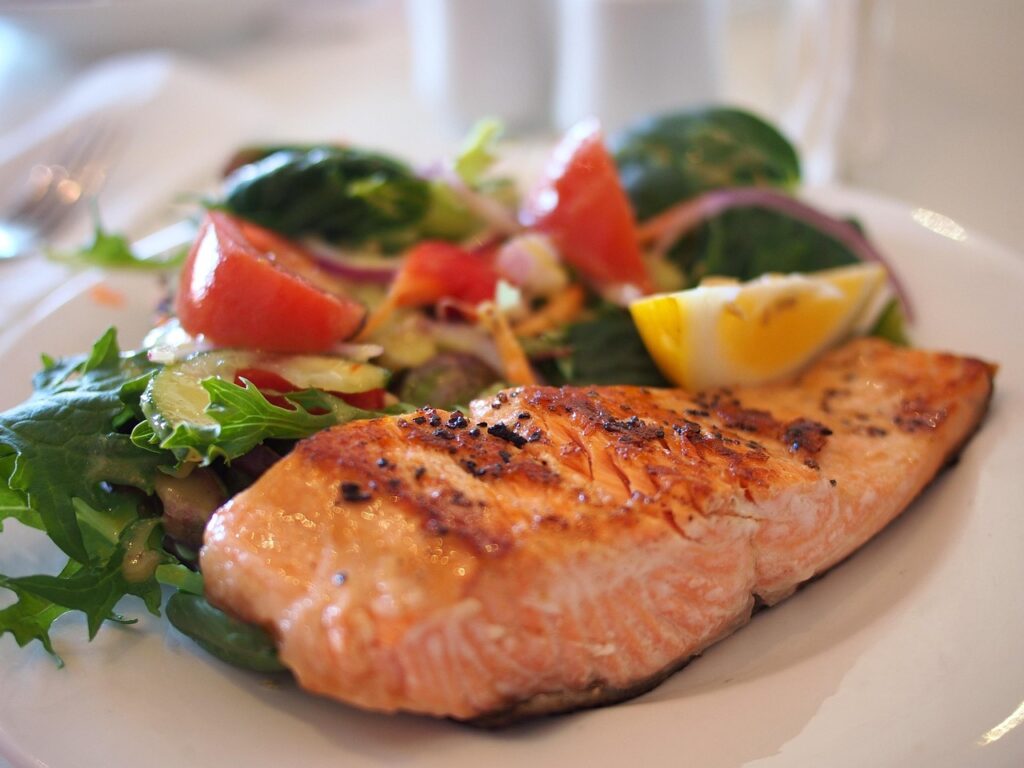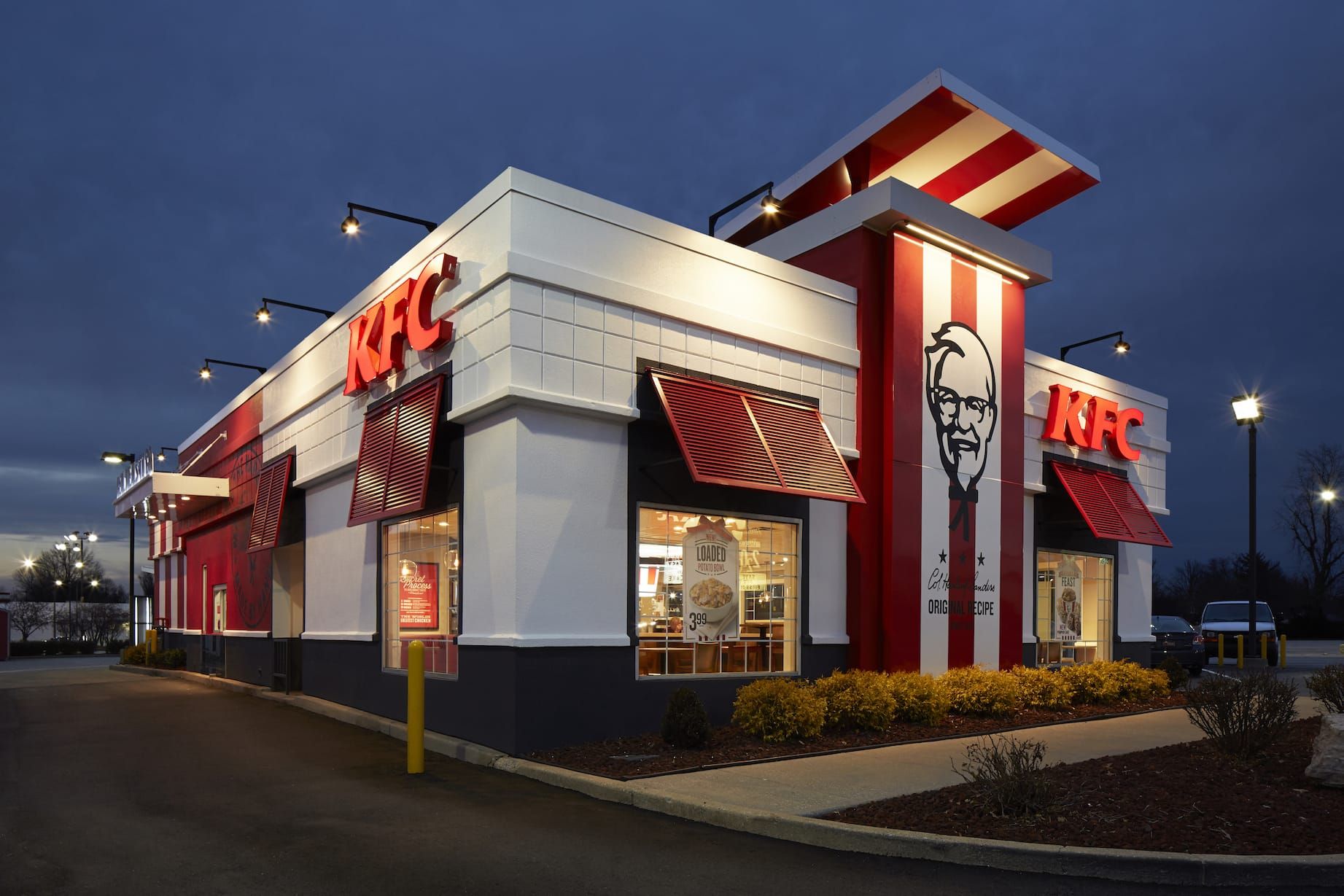
For over a decade, the landscape of consumer spending has been profoundly reshaped by the proliferation of on-demand and unlimited content, a phenomenon that has fundamentally altered how we pay for goods and services across myriad industries. What once seemed confined to the pages of newspapers or the turnstiles of a gym membership has now expanded to encompass nearly every conceivable product, from movie tickets and luxury home goods to everyday essentials, all available on a flexible month-to-month schedule. This expansive “subscription surge” underscores a powerful shift in consumer behavior, signaling a preference for convenience, value, and curated experiences.
This transformation has not bypassed the foodservice sector; rather, major players are now strategically embracing subscription offerings as a potent mechanism to invigorate traffic and cultivate frequent visits, especially in the post-pandemic era. The burgeoning success of models pioneered by digital giants like Netflix and Spotify has laid fertile ground, normalizing the concept of recurring payments for ongoing value. As American households now allocate over $200 each month to various subscriptions, the vast market potential for dining-focused models has become undeniably apparent, inviting restaurants to carve out their own slice of this lucrative “subscription pie.”
The rationale behind this growing popularity is multi-faceted, stemming from both evolving consumer demands and critical operational advantages for businesses. Dining subscriptions are not merely a fleeting trend but a strategic evolution in how restaurants connect with their clientele, build loyalty, and stabilize revenue streams in an often unpredictable industry. This article will delve into the compelling reasons behind this ascent, exploring the broad market forces, the tangible benefits for diners, and the technological underpinnings that make these programs increasingly viable and attractive.
1. **The Broadening Landscape of Subscription Services**The notion of subscriptions, once narrowly defined, has undergone a dramatic redefinition over the past decade. Historically associated with traditional media like newspapers and magazines, or service-based commitments such as gym memberships, the concept has now permeated virtually every aspect of daily life. Today, consumers can subscribe to an astonishing array of products and services, ranging from entertainment streaming platforms and software licenses to pet food deliveries, clothing boxes, and even luxury home goods, all delivered with predictable regularity.
This pervasive expansion highlights a fundamental shift in how consumers prefer to acquire and manage their consumption. The allure of having essentials and indulgences arrive consistently, often with a perceived discount or enhanced convenience, resonates deeply with modern lifestyles. This “subscription boom” signifies a broader acceptance and even expectation among consumers for models that offer ongoing access and value, moving away from purely transactional, one-off purchases.
Mintel Trends has been diligently tracking how “the rise of on-demand and unlimited content has shaped how we pay for everything” for more than a decade. Indeed, “10 years ago, subscriptions seemed limited to newspapers and gym memberships, but now you can purchase just about everything on a month-to-month schedule, from your movie tickets to your luxury home goods.” This broad trend sets the stage for why dining subscriptions are a natural progression, fitting into an already established consumer habit.
Read more about: Unleash Your Inner Gamer: The 14 Essential Retro Consoles You Can Grab Right Now for Unforgettable Journeys Back in Time
2. **Consumer Pursuit of Value and Unmatched Convenience**At the heart of the dining subscription surge lies a powerful confluence of consumer desires: the relentless pursuit of value and an unyielding demand for convenience. In an increasingly fast-paced world, diners are constantly seeking ways to simplify their routines while maximizing the return on their investment, both in terms of cost and time. Subscription models directly address these needs, offering a compelling proposition that resonates deeply with modern purchasing behaviors.
From the consumer perspective, a subscription plan that provides discounted or free food and beverages often feels like a pure upside. It transforms already ingrained purchase behaviors into more financially advantageous ones. Mintel’s latest Foodservice Loyalty report underscores this sentiment, revealing that “55% of restaurant goers are part of a restaurant loyalty program and 48% want to see more restaurants offering subscription programs.” This data clearly indicates a strong appetite for these models, driven by the perception of consistent savings.
The convenience factor is equally compelling. Regular deliveries or guaranteed services inherent in many subscription models eliminate the repeated effort of ordering or making reservations. This streamlining simplifies the dining experience, making it a frictionless part of a consumer’s routine. Whether it’s a daily coffee, a weekly meal kit, or priority access to a favored restaurant, the reduction of friction significantly enhances customer satisfaction and integrates the dining establishment more deeply into their lives.
Read more about: Why Every Man Needs a Swiss Army Knife: A Comprehensive Guide to this Essential Tool for Modern Preparedness

3. **The Pandemic’s Catalytic Role in Subscription Adoption**The COVID-19 pandemic served as an unprecedented catalyst, dramatically accelerating the adoption and expansion of subscription models across various industries, including foodservice. As global lockdowns and social distancing measures became the norm, traditional dining experiences were severely disrupted, forcing both consumers and businesses to adapt rapidly to new realities. This period of uncertainty inadvertently created fertile ground for subscription services to flourish.
With dining rooms closed or operating at limited capacity, online shopping and home delivery demand skyrocketed. Restaurants, faced with plummeting in-person traffic, urgently sought innovative ways to maintain customer engagement and secure vital revenue streams. Subscription models emerged as an attractive solution, offering a steady, predictable income channel during a time of immense financial instability, effectively acting as a “crucial lifeline.”
The document states, “The trend was accelerated by the COVID-19 pandemic. As online shopping and home delivery demand skyrocketed, businesses turned to subscription models to keep customers engaged. The steady revenue stream they provided for businesses made them an attractive option in a time of uncertainty.” It further notes that “Restaurant subscriptions took off right when COVID-19 hit in early 2020, as a way for restaurants to keep customers engaged and loyal when they couldn’t dine in.” This period of forced innovation normalized and popularized subscription dining, as consumers became accustomed to receiving goods and services at home, and businesses recognized the resilience these models offered.
4. **Technological Advancements Facilitating Seamless Subscription Management**The widespread success and scalability of dining subscriptions would be significantly curtailed without the robust technological infrastructure that underpins them. Modern digital tools have revolutionized the ability of businesses, from global chains to local establishments, to implement, manage, and optimize complex subscription programs. These advancements streamline everything from payment processing to personalized customer interactions, making subscriptions a viable and efficient strategy.
Key technological enablers include sophisticated platforms for easy online payment processing, which handle recurring billing cycles and various payment methods with minimal friction for both the customer and the business. Beyond payments, data analytics tools play a crucial role, allowing restaurants to track customer behavior, preferences, and engagement levels. This wealth of information is instrumental in refining offerings and personalizing experiences, ensuring the subscription remains valuable.
Furthermore, advanced customer relationship management (CRM) systems have become indispensable. These systems enable restaurants to manage subscriber profiles, handle inquiries, and execute targeted marketing campaigns, fostering deeper relationships. The context highlights that “Technological advancements have also fuelled the rise of subscriptions. Tools for easy online payment processing, data analytics, and customer relationship management have made it simpler for businesses to create customized experiences and handle subscriptions with greater efficiency.” The integration of digital platforms and apps, such as Craver’s, is noted as “playing a crucial role in simplifying the management of subscriptions, streamlining payment processes, and enhancing customer relationship management.”
5. **Cost Savings as a Primary Driver for Subscribers**One of the most compelling arguments for consumers to embrace dining subscriptions is the significant potential for cost savings. In an economic climate where food inflation remains high and households are increasingly mindful of their discretionary spending, any opportunity to reduce regular expenditures holds considerable appeal. Subscription programs are expertly crafted to offer services or products at a lower effective cost compared to a series of individual, one-time purchases, delivering tangible value for frequent patrons.
Many programs are designed to “pay off” quickly, making the monthly or annual fee negligible in comparison to the cumulative savings. For instance, Sweetgreen’s Sweetpass+ at $10 a month offers “$3 off daily, free delivery and inclusion in Sweetgreen Insiders,” meaning customers can recoup their investment after just a few visits if they utilize the daily discount. Similarly, Panera’s Unlimited Sip Club, while having a monthly fee, offers unlimited beverages, turning frequent visits into substantial savings for those who regularly enjoy coffee, tea, or soda.
This focus on affordability directly addresses a critical consumer need. The National Restaurant Association’s 2021 survey found that “one in three diners said the presence of a loyalty reward program would make them choose one restaurant over another,” and “55 percent of adults surveyed said they would be willing to pay for a subscription to a local restaurant.” These figures underscore that consumers are actively seeking deals and are prepared to commit financially to programs that promise consistent savings, especially in the current economic environment where “consumers are looking for deals.”
Read more about: Mastering Mealtime: A Wirecutter Guide to the Fastest and Best Food Delivery Apps of 2025
6. **The Appeal of Exclusive Access and Personalized Experiences**Beyond mere cost savings and convenience, dining subscriptions tap into a deeper consumer desire for exclusivity and personalization, transforming casual diners into cherished members of a restaurant’s inner circle. This aspect of subscription models elevates the dining experience from a transactional interaction to a more engaged and value-driven relationship, fostering a sense of belonging and special treatment that resonates with today’s consumers.
Subscribers frequently gain “exclusive access” to new menu items, special events, or early reservation opportunities that are unavailable to the general public. This privileged status not only makes them feel valued but also offers unique experiences that are difficult to replicate through standard patronage. For example, P.F. Chang’s Platinum Rewards program provides “priority reservations and VIP concierge services,” moving members to the head of the waitlist and offering dedicated support, enhancing their overall dining journey.
Moreover, the data collected through subscription programs allows restaurants to offer “personalized experiences based on customer preferences, enhancing satisfaction.” This means tailored recommendations, customized offers, and even recognition by name or preferred seating, as seen with P.F. Chang’s integration with host stand systems. This level of bespoke service fosters a stronger emotional connection between the customer and the brand, making the subscription feel less like a fee and more like an investment in a personalized, elevated dining lifestyle.
Read more about: How TikTok’s Algorithmic Revolution is Redefining Celebrity and Reshaping the Global Entertainment Landscape
7. **Ensuring Consistent Quality and Trust Through Subscriptions**In an increasingly crowded and competitive culinary landscape, where new dining options emerge constantly, consumers often face the dilemma of choosing between the familiar and the novel. Dining subscriptions offer a powerful solution to this challenge by ensuring “consistent quality” from a restaurant they already trust, effectively mitigating the inherent risk that can accompany trying new places. This reassurance builds a deeper level of confidence and loyalty among subscribers.
For many diners, their restaurant choices are often “creatures of habit,” with a few go-to establishments for their occasional coffee or quick lunch. A subscription model reinforces these existing habits by making it more rewarding to stick with a known entity. When consumers commit to a subscription, they are not just paying for food or beverages; they are investing in a reliable experience, knowing they can expect the same high standards of quality and service they have come to appreciate.
This consistency fosters a strong sense of trust, which is a cornerstone of long-term customer relationships. The peace of mind that comes from knowing their favored flavors, ingredients, and service style will be consistently delivered encourages repeat business and deepens the bond with the brand. It transforms a restaurant from just a place to eat into a dependable part of a subscriber’s routine, a trusted provider that consistently meets their expectations without fail.
Having thoroughly examined the compelling benefits for consumers and the market dynamics propelling dining subscriptions into the mainstream, our focus now shifts to the equally powerful strategic advantages these models offer to the restaurants themselves. Far from being a mere perk for patrons, subscription programs represent a sophisticated toolkit for businesses seeking stability, deeper engagement, and crucial insights in an increasingly competitive industry. These aren’t just about selling more food; they’re about building a more resilient and responsive business model.
Read more about: Beyond the Red Carpet: How A-Listers Master the Art of Celebrity Branding in the Digital Age
8. **Predictable Revenue: A Cornerstone for Stability**In an industry often characterized by its volatility, where daily foot traffic and seasonal fluctuations can make financial forecasting a constant challenge, the concept of predictable revenue emerges as a transformative advantage. Dining subscriptions fundamentally alter this dynamic, providing establishments with a steady, recurring income stream that is crucial for sustained financial health and strategic planning. This shift moves restaurants away from a purely transactional existence, fostering greater resilience.
This consistent cash flow enables businesses to make more informed decisions regarding staffing, inventory management, and long-term investments. Rather than reacting to daily whims of consumer demand, restaurants with robust subscription bases can anticipate a certain level of income, offering a buffer against unforeseen downturns. The stability provided by these models is an invaluable asset, especially in an industry known for its fluctuating fortunes.
The context explicitly highlights that “Restaurant subscriptions provide a steady, predictable revenue stream, crucial for financial planning and stability in an industry known for its fluctuating income.” This directly underscores how these programs transition businesses from a precarious, day-to-day operation to one built on a more secure and foreseeable financial foundation, fostering confidence in an often-unpredictable market.

9. **Cultivating Customer Loyalty and Lifetime Value**Beyond the immediate financial benefits, dining subscriptions are powerful engines for cultivating profound customer loyalty, transforming casual patrons into devoted regulars. By engaging customers in an ongoing relationship rather than intermittent transactions, restaurants significantly enhance retention and dramatically increase the lifetime value of each diner. This deeper connection fosters a sense of community and belonging that transcends typical patronage.
Regular interactions with subscribers, whether through exclusive offers, personalized communications, or consistent service delivery, naturally strengthen the bond between the customer and the brand. This sustained engagement encourages repeat visits and makes the restaurant an ingrained part of a customer’s routine. The commitment inherent in a subscription often translates into a higher share of wallet and a greater inclination to choose that establishment over competitors.
Sam Bernstein, founder of Table22, articulates this impact compellingly, noting that “whereas a non-subscriber guest, even a relatively loyal one, may visit a restaurant two or three times a year, ongoing subscriptions add seven or eight purchases per year to that equation.” This multiplication of visits directly translates into substantially more revenue from each subscribed guest, making the initial investment in a loyalty program a highly profitable long-term strategy. It’s about nurturing “super fans” who not only visit more frequently but also become advocates for the brand.

10. **Enhancing Operational Efficiency and Waste Reduction**The inherent predictability that subscription models introduce extends well beyond financial planning, profoundly impacting a restaurant’s operational efficiency and significantly contributing to waste reduction. By providing a clearer forecast of demand, these programs allow for more precise inventory management, optimized resource utilization, and streamlined workflow, leading to a more economical and sustainable operation. This foresight is a game-changer for kitchen and service teams.
With a more reliable understanding of how many subscribers will redeem their benefits or require specific items, restaurants can adjust their purchasing and preparation schedules with greater accuracy. This minimizes over-ordering of perishable ingredients, directly combating food waste—a persistent challenge in the foodservice sector. Such precision also ensures that staff can be allocated more effectively, reducing labor costs and enhancing service quality.
The document emphasizes that “Predictability in demand allows for better inventory management, reducing waste, and optimizing resource utilization.” This strategic advantage underscores how subscriptions are not just a front-of-house marketing tool but a comprehensive operational enhancer. It enables a leaner, more agile business that is better equipped to manage its resources responsibly and profitably.
Read more about: Unlocking Instant Power: 8 Essential DIY Upgrades for Your Car’s Performance
11. **Leveraging Data for Personalized Offerings and Insights**In today’s data-driven economy, the ability to collect and analyze customer information is a goldmine for businesses, and dining subscriptions offer an unparalleled conduit for this. By opting into a program, subscribers provide restaurants with invaluable data that can be meticulously analyzed to understand consumer behavior, preferences, and engagement patterns, thereby facilitating a level of personalization previously unattainable. This granular insight transforms how restaurants develop their offerings.
This wealth of information allows establishments to move beyond generic marketing and create highly tailored experiences. Restaurants can use data to recommend specific menu items, offer customized promotions, or even anticipate a customer’s favorite order, enhancing satisfaction and strengthening loyalty. For instance, P.F. Chang’s leverages its Platinum Rewards program not just for perks but also for “insider panels…[to] help shape the future of P.F. Chang’s,” turning subscribers into active co-creators of the brand’s evolution.
Genaro Perez, P.F. Chang’s senior vice president of marketing, highlights this strategic data collection: “What we know is that the platinum subscribers come see us way more often and their check average is higher. These are a unique set of guests that we want to learn about and, as we get more data about their behaviors, we can better serve them.” This clearly illustrates how subscriptions are not merely about transactions, but about building a deeper, data-informed relationship that drives both customer satisfaction and business growth. The integration of digital platforms and CRM systems, as noted earlier, plays a crucial role in managing and utilizing this valuable customer intelligence.
Read more about: Beyond the Red Carpet: How A-Listers Master the Art of Celebrity Branding in the Digital Age
12. **Panera Bread: Mastering the Beverage Subscription Model**Panera Bread stands as an undeniable trailblazer in the fast-casual dining sector, demonstrating the immense potential of subscription models with its “MyPanera+ Coffee” initiative. Launched in March 2020, this program, offering unlimited coffee for a monthly fee, rapidly captured industry attention and consumer enthusiasm, quickly amassing nearly 500,000 paid subscribers within its first six months. It validated the strong market appetite for such innovative offerings.
Building on this initial success, Panera strategically expanded its program into the “Unlimited Sip Club,” broadening the beverage options and introducing an annual membership tier. A key enhancement was offering $0 delivery on digital orders placed exclusively through Panera’s own channels. This was a deliberate move not only to provide added value to members but also to strategically collect more proprietary customer data, rather than relying on third-party aggregators, ensuring a direct connection with their most loyal patrons.
The results speak volumes about the program’s effectiveness: members of the Unlimited Sip Club now impressively account for approximately 25% of Panera’s total transactions. Furthermore, the data revealed that “subscribers visited Panera Bread eight times more per month than non-subscribers,” a testament to its power in driving customer engagement and frequency. This initiative has been a pivotal force in the remarkable growth of the brand’s loyalty program, which now proudly boasts over 48 million members.

13. **Taco Bell: Innovating with Themed Passes**Taco Bell has injected a significant dose of innovation into the fast-food subscription landscape with its distinctive “Taco Lover’s Pass.” Introduced in early 2022, this service offered customers the enticing prospect of enjoying one free taco daily for a month, all for a modest fee of just $10. The pass covered a diverse range of popular taco varieties, from classic crunchy tacos to the iconic Doritos tacos, appealing to a broad segment of their loyal fanbase.
This imaginative offering was exclusively accessible to members of Taco Bell’s rewards program via their dedicated app, creating a seamless digital experience. Subscribing to the pass unlocked a special section within the application, allowing customers to effortlessly add their complimentary taco to their order during checkout. This digital integration underscored the brand’s commitment to modern consumer convenience and engagement.
The strategic intent behind the Taco Lover’s Pass was multi-faceted: to draw in customers with the allure of a free daily taco, with the underlying hope of boosting their total order value, and crucially, to gather valuable insights into ordering patterns for more targeted and personalized marketing efforts. The program’s efficacy was definitively proven during its pilot phase in Tucson, Arizona, where Taco Bell observed an impressive 20% surge in its rewards program memberships, validating its capacity to cultivate deeper customer relationships.
Building on the success of this concept, Taco Bell further diversified its subscription offerings with the introduction of the “Nacho Fries Lover’s Pass.” Priced similarly for Rewards members, this new pass extended the daily treat to a regular order of Nacho Fries for 30 consecutive days, showcasing the brand’s commitment to leveraging digital technology for enhanced customer experience. As Dane Mathews, Taco Bell’s Chief Digital Officer, stated, “We’re committed to pushing the boundaries of convenience and innovation for our biggest fans, our loyalty members.” This forward-thinking approach, also championed by Yum Brands CEO David Gibbs, reinforces the strategic value of such initiatives in fueling loyalty growth and customer frequency.

14. **P.F. Chang’s: Elevating the Premium Diner Experience**P.F. Chang’s has carved out a unique niche in the restaurant subscription sphere by strategically enhancing its existing loyalty framework with the introduction of the Platinum Rewards tier. For a monthly fee of $6.99, this paid subscription layer offers a suite of exclusive perks designed to provide exceptional added value for its most frequent and discerning diners, distinguishing it significantly from standard loyalty programs. This move was a proactive strategy, especially post-pandemic, to re-engage guests on a more elevated level.
Platinum members accrue points at a significantly accelerated rate, earning 15 points for every dollar spent, compared to the 10 points offered to free Gold loyalty tier members. Beyond expedited point accumulation, the program bestows practical benefits such as unlimited free delivery on orders placed directly through P.F. Chang’s website or app. This encourages direct engagement, allowing the brand to bypass third-party fees and foster a more direct relationship with its customers.
The premium experience extends seamlessly into the in-restaurant dining environment. Platinum members are granted priority on the waitlist, a valuable perk during peak hours, and gain access to a dedicated “VIP concierge” for personalized assistance via phone or email. This commitment to exceptional service is further amplified by the subscription’s deep integration with P.F. Chang’s host stand and reservation systems, enabling staff to offer truly personalized service, from greeting members by name to seating them at their preferred tables.
Genaro Perez, Senior Vice President of Marketing, emphasized P.F. Chang’s thoughtful approach, stating, “We thought about how we could connect with the consumer and meet them where they want to meet us.” The strategic pricing of the subscription at $6.99, despite internal findings suggesting customers might pay more, was a deliberate choice to encourage broader adoption. This positions P.F. Chang’s as a leader in leveraging subscriptions not just for revenue, but for deep, data-rich customer relationships, noting that platinum subscribers “come see us way more often and their check average is higher.”
15. **Independent Establishments: Fostering Community and Niche Offerings**While major chains have embraced subscriptions with impressive scale, this innovative model is far from exclusive to them. Independent restaurants, often driven by a desire to foster closer community ties and offer unique, niche experiences, have also successfully leveraged subscriptions, particularly during the challenging landscape of the pandemic. These programs serve as vital lifelines and powerful tools for building dedicated local followings.
Many independent eateries initially introduced subscription models in 2020 as a creative response to pandemic-induced disruptions. For example, Sonny’s Pizza in DC, inspired by Zoom wine tastings, launched a natural wine club in partnership with a distributor. This initiative not only generated a crucial “socially distant revenue stream” but also cultivated a consistent community, attracting over 100 members who enjoy both monthly wine selections and expanded in-person tastings. Alanna Reeves, Sonny’s social media manager, noted it ensures “a consistent community – a core community of people.”
Platforms like Table22, which launched in 2020 specifically to aid restaurants in managing subscriptions, have become instrumental for independent businesses. Founder Sam Bernstein reports the platform now serves 500 restaurant partners and tens of thousands of members, showcasing the diversity of offerings. From butcher boxes laden with pastured chicken and dry-aged beef at Lady Jaye in Seattle to a “dumpling of the month club” from Kachka in Portland, Oregon, and Chef Greg’s Family Supper Club from Leah & Louise in Charlotte, these examples highlight how subscriptions can be tailored to the unique strengths and culinary identity of local establishments. These programs not only multiply revenue from loyal guests but also contribute to more connected on-premise experiences, offering perks like waived fees and early access to reservations, effectively drawing patrons into a restaurant’s inner circle.
In essence, dining subscriptions represent a profound evolution in the relationship between restaurants and their patrons. They are far more than a passing trend; they are a sophisticated mechanism for building financial stability, fostering unwavering loyalty, optimizing operations, and gathering invaluable insights that fuel future growth. From multinational chains to beloved local haunts, the data unequivocally shows that this model is not merely a benefit but a necessity, crafting a future where dining is not just a transaction, but a continuous, valued experience. The ability to create ‘super fans’ through these personalized and engaging programs ensures that, in the grand culinary theater, everyone gets a starring role, securing a vibrant and connected dining landscape for years to come.












